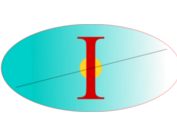Citation:
Abstract:
Dynamics of glycine chemisorbed on the surface of a silicon cluster is studied for a process that involves single-photon ionization, followed by recombination with the electron after a selected time delay. The process is studied by “on-the-fly” molecular dynamics simulations, using the semiempirical parametric method number 3 (PM3) potential energy surface. The system is taken to be in the ground state prior to photoionization, and time delays from 5 to 50 fs before the recombination are considered. The time evolution is computed over 10 ps. The main findings are (1) the positive charge after ionization is initially mostly distributed on the silicon cluster. (2) After ionization the major structural changes are on the silicon cluster. These include Si–Si bond breaking and formation and hydrogen transfer between different silicon atoms. (3) The transient ionization event gives rise to dynamical behavior that depends sensitively on the ion state lifetime. Subsequent to 45 fs evolution in the charged state, the glycine molecule starts to rotate on the silicon cluster. Implications of the results to various processes that are induced by transient transition to a charged state are discussed. These include inelastic tunneling in molecular devices, photochemistry on conducting surfaces, and electron-molecule scattering.
Notes:
RBaer-Publication



